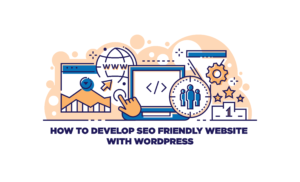Understanding SEO and Its Importance
Search Engine Optimization (SEO) refers to the process of enhancing a website’s visibility on search engines like Google, Bing, and Yahoo. With the increasing reliance on online search, understanding SEO’s critical role is indispensable for businesses and content creators alike. Effective SEO content creation enables websites to rank higher in search engine results pages (SERPs), thus driving substantial organic traffic. When users search for specific keywords or phrases, search engines present results based on a complex algorithm that evaluates various factors, including relevance and authority. Developing a strong grasp of how these algorithms function can significantly impact a site’s ability to attract visitors.
SEO principles can be categorized into two primary types: on-page SEO and off-page SEO. On-page SEO encompasses all measures taken directly within a website to improve its position in search rankings, including writing for SEO through engaging and keyword-optimized content, optimizing meta tags, and enhancing the overall user experience. Meanwhile, off-page SEO involves external factors such as link-building strategies, social media marketing, and influencer outreach, which contribute to the website’s perceived authority and relevance. Both are crucial in the realm of SEO content tips, as they determine how well a site can compete within its niche.
For anyone looking to optimize blog posts for better performance, adopting SEO principles when planning and executing website content is essential. By integrating relevant keywords naturally, content creators can improve their chances of being discovered by users searching for specific topics. Ultimately, a solid understanding of SEO will not only improve visibility but also enhance user experience, thereby increasing the likelihood of engaging users and converting them into loyal followers.
Keyword Research: The Foundation of SEO Content
Keyword research serves as the bedrock for effective SEO content creation, as it allows creators to align their writing with the search behaviors of their target audience. At its core, keywords are the specific terms and phrases that users input into search engines when seeking information. Understanding these keywords is vital, because using them strategically can significantly enhance the visibility of your WordPress SEO content.
To conduct thorough keyword research, various tools can be employed. Google Keyword Planner is a popular option that enables users to discover new keyword ideas while also providing insights into search volume and competition level. Similarly, tools like SEMrush and Ahrefs deliver valuable analytics, including keyword difficulty scores and the ranking potential of related phrases. These insights not only assist in identifying high-value keywords but also aid in understanding trending topics within your niche.
Another critical aspect of keyword research is grasping search intent. Search intent refers to the reason behind a user’s query—whether they are looking for information, making a purchase, or seeking specific content. Recognizing this intent can guide writers in selecting the most relevant keywords, ensuring that their content meets the needs of the audience. For instance, optimizing blog posts for informational intent might involve using keywords that answer common questions, while transactional intent might focus on keywords related to buying or services.
In conclusion, effective keyword research is indispensable for writing for SEO. By leveraging the right tools and understanding search intent, content creators can develop strategies that not only attract visitors but also drive meaningful engagement on their WordPress sites. Implementing solid SEO content tips rooted in this research ultimately enhances the performance and reach of online content.
Creating SEO-Optimized Content: Best Practices
When it comes to seo content creation, implementing best practices is crucial for maximizing visibility and engagement on your WordPress website. An effective strategy begins with thorough keyword research, enabling writers to identify relevant phrases that potential visitors are searching for. Once keywords are established, strategic placement within the content becomes essential. It is advisable to include the primary keyword in the title, introductory paragraph, and at least one subheading, ensuring it flows naturally within the text.
Content structure plays a significant role in both writing for seo and enhancing user experience. Utilizing headings and subheadings (H2, H3) helps in organizing the content, making it easily scannable for readers. This structure not only aids in comprehension but also allows search engines to better index the page. Each section should focus on specific subtopics relevant to the main theme, ensuring depth and clarity. Additionally, incorporating bullet points and numbered lists can improve readability, making information more digestible.
Another pivotal aspect is the crafting of compelling meta titles and descriptions, which significantly influence click-through rates. A well-structured meta title should incorporate the target keyword while being engaging enough to entice users from search engine results. Similarly, the meta description should summarize the content vividly, stimulating interest while also utilizing pertinent keywords.
Finally, creating engaging content that keeps readers on the page is integral to optimize blog posts seo. Providing valuable insights, practical tips, and thought-provoking questions fosters interaction, encouraging readers to explore further or share the content. Striking a balance between keyword usage and producing high-quality writing ensures visitors receive value, ultimately driving traffic and boosting your site’s SEO performance.
Utilizing WordPress Plugins for SEO Enhancement
WordPress is a powerful content management system that offers various plugins specifically designed to improve SEO content creation. Among the most notable plugins are Yoast SEO and All in One SEO Pack, which provide users with essential tools for optimizing their blog posts for search engines. These plugins can notably enhance on-page SEO factors, ensuring that your content is both accessible and valuable to readers as well as search engine crawlers.
One of the remarkable features of Yoast SEO is its ability to analyze content readability and keyword optimization. After writing your content, the plugin generates a score that reflects its effectiveness in adhering to SEO content tips. For instance, it offers suggestions related to paragraph length, sentence structure, and overall clarity, thereby facilitating writing for SEO. By following these recommendations, content creators can significantly improve the chances of their blog posts ranking higher on search engines.
All in One SEO Pack also empowers users with similar capabilities. From creating XML sitemaps to optimizing meta descriptions and titles, this plugin simplifies the process of optimizing blog posts for SEO. The step-by-step installation of either plugin is straightforward: first, navigate to the ‘Plugins’ section in your WordPress dashboard, then click ‘Add New’ and search for the desired plugin. Once installed, activating these plugins will unlock a range of powerful features. Users can configure settings to suit their content goals, such as specifying focus keywords, tweaking readability scores, and adjusting SEO titles based on best practices.
Ultimately, harnessing the potential of WordPress plugins like Yoast SEO and All in One SEO Pack can be a game-changer in your SEO strategy. By utilizing these plugins, you can optimize your content effectively, ensuring that you drive significant traffic to your WordPress website.
Incorporating Visual Content for Enhanced Engagement
In today’s digital landscape, visual content plays a crucial role in enhancing engagement on your WordPress website. Incorporating elements such as images, infographics, and videos can significantly improve user interaction and retention, ultimately contributing to effective SEO content creation. Research indicates that articles featuring visuals receive 94% more views than those that do not, highlighting the importance of integrating diverse types of media.
To optimize your visual content for SEO, begin with the use of descriptive alt text. This practice not only aids visually impaired users but also allows search engines to understand the content of the images. Properly naming your image files before uploading them—by incorporating targeted keywords—further enhances your WordPress SEO content. For instance, rather than a generic file name like “IMG_123.jpg,” opt for a more descriptive name such as “seo-content-tips-infographic.jpg”. This approach can positively influence search engine rankings.
Additionally, make sure that the visuals you use are relevant to the topic at hand. Infographics can be particularly effective as they condense information into easy-to-understand visuals, making them shareable across social media platforms. By doing so, you not only enrich the user experience but also increase the likelihood of backlinks—a vital aspect of writing for SEO.
When sourcing images, consider using royalty-free platforms that provide high-quality graphics without infringing copyright laws. Alternatively, creating original graphics tailored to your content can add uniqueness and authenticity. Tools like Canva or Adobe Spark can assist in designing visually appealing content that is aligned with your brand’s aesthetic.
In conclusion, incorporating visual content is a powerful way to enhance engagement on your WordPress website. By following best practices for optimization, you ensure that your visuals not only captivate readers but also contribute positively to your overall SEO strategy. This holistic approach ultimately works to optimize blog posts for SEO and drives more traffic to your site.
Mobile Optimization: Ensuring Accessibility
In today’s digital landscape, mobile optimization is crucial for any website, particularly for those using WordPress. With a significant portion of internet users accessing websites via mobile devices, ensuring your site is mobile-friendly directly impacts its accessibility and SEO effectiveness. Search engines like Google prioritize mobile-responsive websites, making it essential to integrate mobile optimization strategies as part of your overall SEO content creation efforts.
One of the primary strategies for mobile optimization is adopting responsive design principles. This design approach ensures that your website adjusts seamlessly to various screen sizes, providing users with an optimal viewing experience regardless of the device used. Responsive designs enhance user engagement, which can lead to lower bounce rates and higher conversion rates. For WordPress users, selecting a responsive theme is a foundational step in writing for SEO, allowing you to maximize your site’s reach across devices.
Fast loading times are another critical aspect of mobile optimization. Research indicates that users will abandon websites that do not load within a few seconds. To enhance loading speeds, consider optimizing images and using caching plugins on your WordPress site. Additionally, leveraging a Content Delivery Network (CDN) can further enhance your site’s performance by distributing content more efficiently. Google’s PageSpeed Insights is a valuable tool for evaluating your site’s loading speed, providing specific recommendations to optimize blog posts for SEO performance.
To assess your mobile accessibility, utilize tools like Google’s Mobile-Friendly Test, which offers insight into how well your site performs on mobile devices. By addressing the evaluation results, you can refine your mobile strategy, ensuring your WordPress site is equipped to deliver a superior user experience while simultaneously improving its ranking in search engine results. Prioritizing mobile optimization is indeed an integral part of effective SEO content tips and strategies.
Effective Internal and External Linking Strategies
Linking is a fundamental aspect of SEO content creation that can significantly enhance the user experience and improve your website’s search engine rankings. Effective internal linking allows you to structure your website in a way that guides users seamlessly through your content. By incorporating relevant anchor text and linking to other pages within your WordPress site, you can help users discover more information while simultaneously signaling to search engines the importance of those pages. For instance, when writing for SEO, it is advisable to link to engaging blog posts or product pages that elaborate on topics mentioned in your current article, thus optimizing blog posts for better visibility.
In addition to internal links, external linking to reputable sources adds value to your content. It strengthens your credibility by demonstrating that you have conducted thorough research and provides your audience with additional resources for deeper understanding. When choosing external links, it is vital to ensure they are from authoritative and relevant sources, as this can improve user trust and, subsequently, your site’s SEO. However, it’s equally important to manage your link profile effectively. Search engines can penalize websites that display a large number of low-quality or spammy links, so maintaining a healthy balance of internal and reputable external links is crucial.
Additionally, strategically placing these links within your SEO content tips can help avoid a cluttered appearance. Each link should enhance the reader’s journey rather than distract from the main message. When done correctly, these linking strategies will not only improve the SEO of your content but also create a more compelling and insightful experience for your audience, encouraging them to spend more time on your site and interact with your content.
Monitoring and Analyzing SEO Performance
To ensure that your efforts in seo content creation yield desired results, it is crucial to monitor and analyze performance metrics regularly. Utilizing tools like Google Analytics and Google Search Console can significantly enhance your understanding of how your content is performing and how users are interacting with it. Google Analytics provides insights into website traffic, allowing you to track the number of visitors, page views, and unique sessions. By examining this information, you can identify which WordPress SEO content resonates most effectively with your audience.
Additionally, Google Search Console offers valuable data about keyword rankings and site performance in search results. You can see which queries are sending traffic to your site, analyze click-through rates (CTR), and assess the overall visibility of your pages in search engines. This information is vital for writing for SEO, as it helps you understand the effectiveness of your chosen keywords and phrases.
Another essential aspect of monitoring involves evaluating user engagement metrics like bounce rate and time spent on pages. High bounce rates may indicate that users are not finding the content relevant or engaging enough, prompting a reevaluation of your approach to seo content tips. By assessing these metrics, you can make informed decisions about necessary adjustments to your content strategy.
Continuously measuring and adjusting your SEO efforts based on data not only optimizes blog posts for SEO but also enhances the overall performance of your website. The key is to view this process as an ongoing cycle of improvement, where insights gleaned from analytics guide your content creation and optimization strategies, ensuring that you not only attract traffic but also retain users effectively.
Staying Updated with SEO Trends and Algorithm Changes
In the rapidly evolving digital landscape, staying informed about the latest SEO trends and algorithm changes is paramount for success in SEO content creation. Search engines like Google frequently update their algorithms to enhance user experience, which means that what may be effective today could become obsolete tomorrow. Thus, content creators must familiarize themselves with these shifts to maintain and improve their WordPress SEO content.
One effective approach to staying updated is to follow reputable SEO content tips from industry-leading blogs such as Moz, Search Engine Land, and Neil Patel. These platforms offer insights into current trends, expert analyses, and actionable strategies that can help you adapt your content accordingly. Moreover, newsletters from recognized SEO authorities are an excellent way to receive curated updates directly in your inbox.
In addition to blogs and newsletters, engaging with online communities like SEO forums and social media groups can provide valuable real-time information. Participating in discussions on platforms such as Reddit or LinkedIn allows content creators to share experiences and gather insights about the effectiveness of various SEO techniques in light of recent changes.
It is important to note that while keeping abreast of trends is vital, adaptability is equally crucial. A flexible mindset fosters innovation and encourages writers to experiment with writing for SEO, testing different strategies to discover what resonates best with audiences while complying with the newest SEO standards. Adopting an attitude of lifelong learning ensures you remain relevant and can swiftly adapt to changes, thereby optimizing your blog posts SEO and driving more traffic to your WordPress website.








